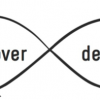 |
How to Build a Successful Team: Analysis, Motivation, and Beyond It takes more than just gathering a bunch of skilled testers in a room together to make a great test team. Learn how to analyze individual tester types, motivate your team, and achieve success.
|
|
|
|
Not Just a Number: The Real Value of Metrics Metrics can be enormously helpful, but only if they’re used correctly. Abuse them, and they will drive dysfunction. Study the stories behind the data to find the real value.
|
|
|
|
Things Change (and So Should Processes) Much like the VCRs of yesteryear, our software development processes are not going to last forever. They’ll fall out of favor, while new and stronger concepts replace them. Jonathan Kohl writes about coping with process evolution in the quest to improve software.
|
|
 |
Agile Development Conference & Better Software Conference West 2013: Seven Deadly Habits of Dysfunctional Software Managers
Slideshow
As if releasing a quality software project on time were not difficult enough, poor management of planning, people, and process issues can be deadly to a project. Presenting a series of anti-pattern case studies, Ken Whitaker describes the most common deadly habits—and ways to avoid them.
|
Ken Whitaker, Leading Software Maniacs
|
 |
Turbocharge Your Team’s Productivity: Increase Your Ability to Deliver
Slideshow
Many factors impact a team’s productivity. Some are well understood—collocation, size, common purpose. Others are less well known including social capital—the value of social networking. Rob Maher describes techniques that have been successfully used within organizations to enhance team...
|
Rob Maher, Rob Maher Consulting
|
 |
Find Requirements Defects to Build Better Software
Slideshow
Requirements defects are often the source of the majority of all software defects. Discovering and correcting a defect during testing is typically twenty-five times more expensive than correcting it during the requirements definition phase. Identifying and removing defects early in the...
|
John Terzakis, Intel
|
 |
Find Requirements Defects to Build Better Software
Slideshow
Requirements defects are often the source of the majority of all software defects. Discovering and correcting a defect during testing is typically twenty-five times more expensive than correcting it during the requirements definition phase. Identifying and removing defects early in the...
|
John Terzakis, Intel
|
 |
Gamification to Solve Real-World Challenges
Slideshow
What can we learn from Angry Birds, which has been downloaded more than one billion times? What makes games engaging and fun? What is the secret that motivates players to mastery, even when they fail 80 percent of the time? What if we could reverse-engineer the principles behind a...
|
Ram Srinivasan, inRhythm
|
 |
Combating Learned Complacency to Reduce Systems Glitches Leslie Sachs writes on how employees in many companies have essentially learned to no longer raise their concerns because there is no one willing to listen, and—even worse—they may have suffered consequences in the past for being the bearer of bad tidings. Leslie refers to this phenomenon as learned complacency.
|
|
 |
Strengthen Your Discovery Muscle An organization shouldn’t spend all its time building its delivery muscle without simultaneously building its discovery muscle. In fact, successful software teams deliver great products because they invest in discovery. Learn how to expand your innovation and strengthen your discovery muscle.
|
|

